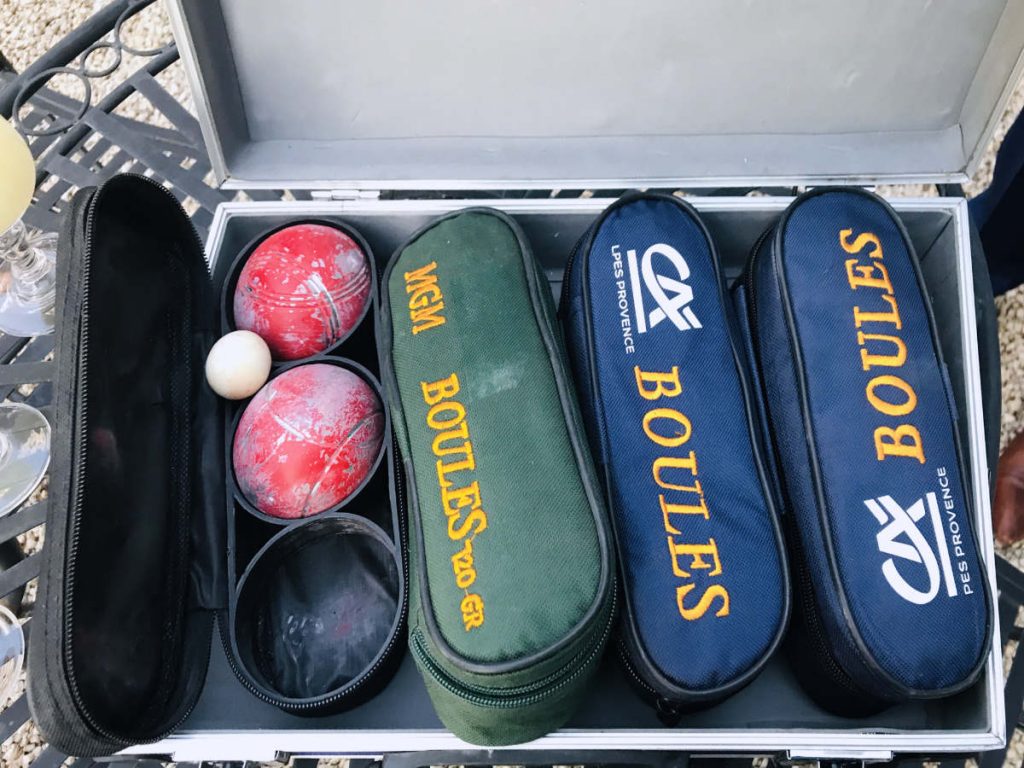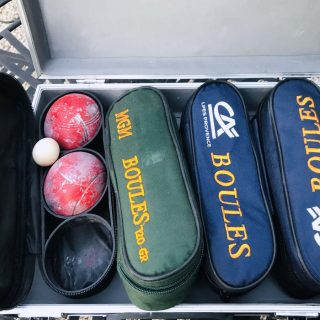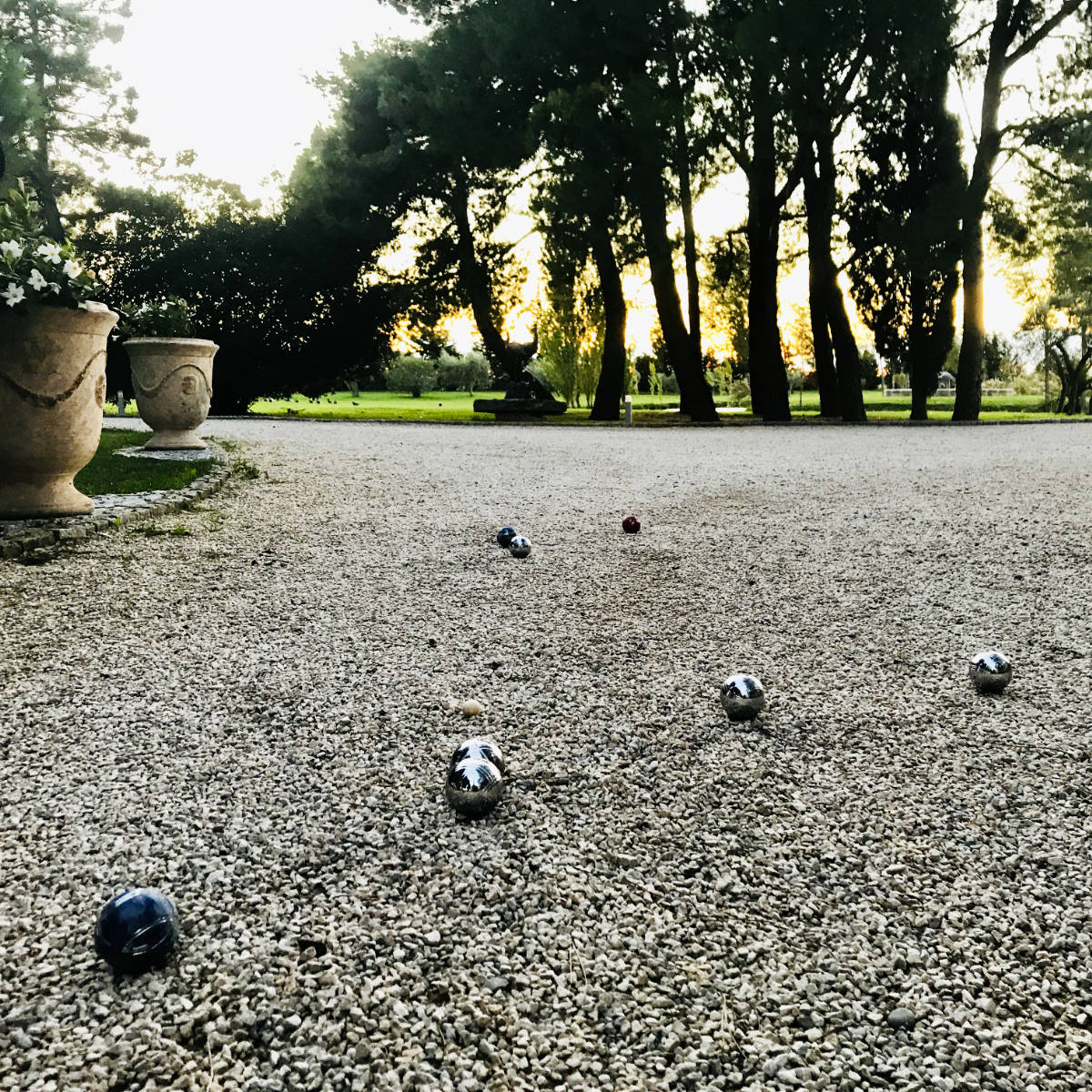If you have been to Marseille in the South of France, you know that the most important things to the locals there are pastis, pétanque, and the Olympique de Marseille football team. (I should know, I’m married to a Marseillais.)
A variation of lawn bowls and the Italian game of bocce, pétanque dates back to the Greek and Roman era and was popular all around the Mediterranean. The current rules of pétanque were codified around 1907 in La Ciotat (a beach city near Marseille). But that is not to say it is only prominent in the south of France.
In 1792, a group of French national guard soldiers in Marseille came up with the bright idea of playing pétanque with cannonballs, right next to an armament depot. The end result was 38 people dead and over 200 injured.
Pétanque and boules has become so popular as a sport in France, there are leagues of players and competitions are carried live on sports tv channels. Today, it is as well-loved as bowling in the U.S. or curling in Canada. So how do you play pétanque? Let’s find out, shall we? Allons-y!
1. The Terrain
It sounds obvious but the ground where you play pétanque should be more or less flat. It is not played on grass, but usually on hard sand or gravel. Note, a beach is too soft and sandy.
The ground must measure a minimum of 3 x 12m long (10 x 40ft), but the ideal terrain for a competition is around 4 x 15m (13 x 49ft).

2. The Balls
The number of boules (meaning “balls”) you need will depend on the number of players you have.
| Number of Players | Number of Balls |
|---|---|
| 2 players | 3 balls each |
| 3 players | 3 balls each |
| 4 players divided into 2 teams | 3 balls each |
| 6 players divided into 2 or 3 teams | 2 balls each |
The balls have markings and lines on them identifying whose balls they are, so you have to check that you have enough sets of the same balls for each player.
The balls are usually made of metal, with a diameter between 7.05 and 8 cm (around 3 inches) and a weight ranging from 650g to 800g (around 1.7 lbs).
If you buy balls at a pétanque shop in Marseille, you could potentially personalize your balls with a special engraving like the pros do.

3. The Rules
Similar to the English game of bowls or the Italian bocce, the goal of the game is to get as many balls as possible next to a marker to score points.
- Trace a circle on the ground.
- The 1st player stands in the circle and throws the tiny wooden ball called the cochonnet.
- The 1st player then throws the first boule as close as possible to the cochonnet.
- Players on each team alternate, with each opposing team trying to get as close to the cochonnet as possible, until every player has played their balls.
- After the end of the round, the winning team which has the closest ball counts their point. They also earn points for any other of their balls that are closer to the cochonnet than the other teams’ best balls.
- The rounds of pétanque continue until one of the teams reaches 13 points first.
4. Don’t be Fanny
When a team is a “Fanny”, it means they didn’t score any points and therefore lost the game 13-0.
It used to be that the price for being a Fanny was to kiss the butt of a fake “Fanny”, such as that in a painting or a sculpture. (This is France, there are plenty of paintings and sculptures around!) Nowadays though, a “Fanny” team has to pay for a round of drinks.

How to play Pétanque
Equipment
- Cochonnet
- Tape measure
On hand
- Set of Boules
Instructions
- Find a terrain that is flat. The ground should measure around 4 x 15m long (13 x 49ft).
- Trace a circle on the ground.
- The 1st player stands in the circle and throws the tiny wooden ball called the cochonnet.
- The 1st player then throws the first boule as close as possible to the cochonnet.
- Players on each team alternate, with each opposing team trying to get as close to the cochonnet as possible, until every player has played their balls.
- After the end of the round, the winning team which has the closest ball counts their point. They also earn points for any other of their balls that are closer to the cochonnet than the other teams’ best balls.
- The petanque rounds continue until one of the teams reaches 13 points first.
Notes
- Players should be divided into 2 or 3 teams of 2 or 3 players each.
- Each player should have either 2 or 3 balls. Depending on the number of players, you may need to buy 2-3 petanque sets.

So are you ready for a game of pétanque, hopefully with a glass of pastis in hand? Enjoy the game and à bientôt!




